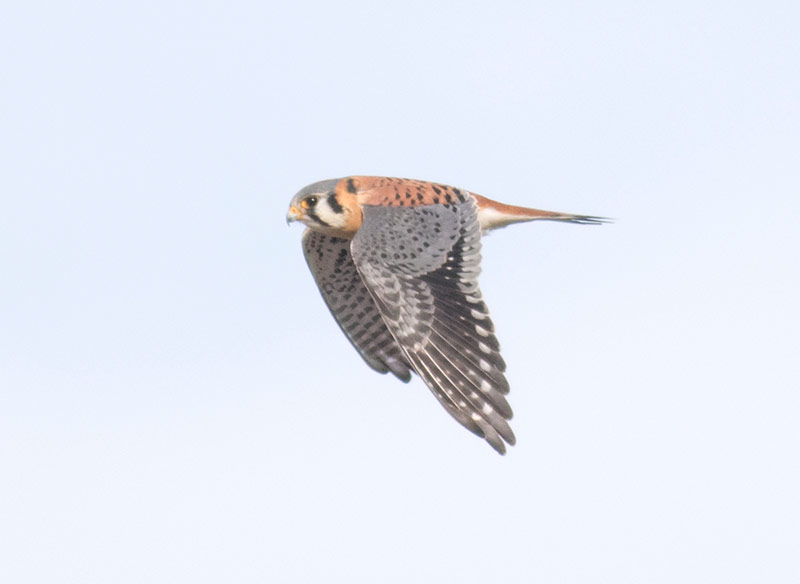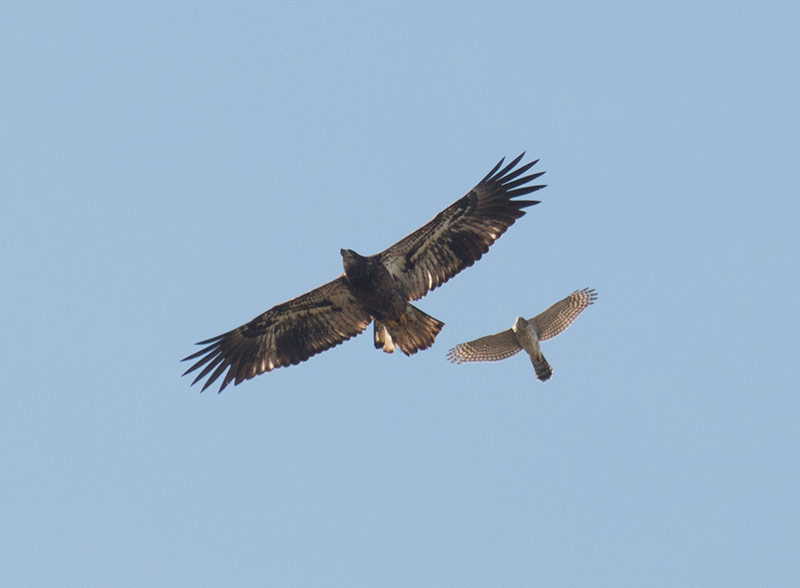Early Season Hawk Watching
2/19/17
By David Brown
January and February can be slow months for birding but as we get into March we begin to see the first signs of spring migration. The best place to witness this is at a hawk watch.

American Kestrel
We live in a great area for viewing raptors. You can't drive more than a mile on the highway without passing a red-tailed hawk perched in a tree or on a street light. Northern harriers and American kestrels regular hunt in our farmland. In addition, our mountains provide hawks and eagles with the sky highways they need to migrate long distances. When wind hits a mountain the air is directed upward providing lift. Large birds use this lift to glide directly over the ridge for as far as they can without needing to flap and expend energy.
There are 16 species of raptors and vultures that migrate through Pennsylvania. In late-February the first species begin to migrate north to their breeding grounds. The main attraction in March is golden eagle migration. On a day with poor winds you may see only a few or none, but on a day when conditions are right you could see dozens. Other sought after early-season migrants are rough-legged hawks and northern goshawks. Bald eagles are also common.

Bald Eagle and Peregrine Falcon

Bald Eagle and Peregrine Falcon
In addition to raptors, many other species of birds are also seen migrating at hawk watches. Snow geese and Canada geese migrate in skeins of hundreds of birds. Tundra swans migrate in flocks of a few dozen. Ring-billed gulls migrate in large unorganized groups. Even common loons are regularly seen.
Hawk watching isn't much fun if you can't identify what you are seeing so beginners may want to get help from experienced hawk watchers. Tussey Mountain hawk watch near State College is the closest site with a full-time counter and is welcoming to beginners and visitors. Hawk watching is a team effort so even if you can't identify anything you could still be the person to spot the bird of the day. The more time you put into scanning the sky the more you will find.
Dress in layers and wear more than you think you'll need. Binoculars are necessary and you may want to bring a camera. Make sure you have everything you need for the time you expect to spend, including food and water. Hand warmers can make a big difference in feeling warm on a freezing day. You can bring a portable reclining hunting chair or go the classic way and sit on a rock. For spring hawk watching there is often glare from snow on the ground and you are looking towards the sun so I recommend sunglasses as well.
Hawk watching is fun and exciting and we live in a perfect area to try it so I hope to see you soon on a local mountain.

Bald Eagle and Cooper's Hawk